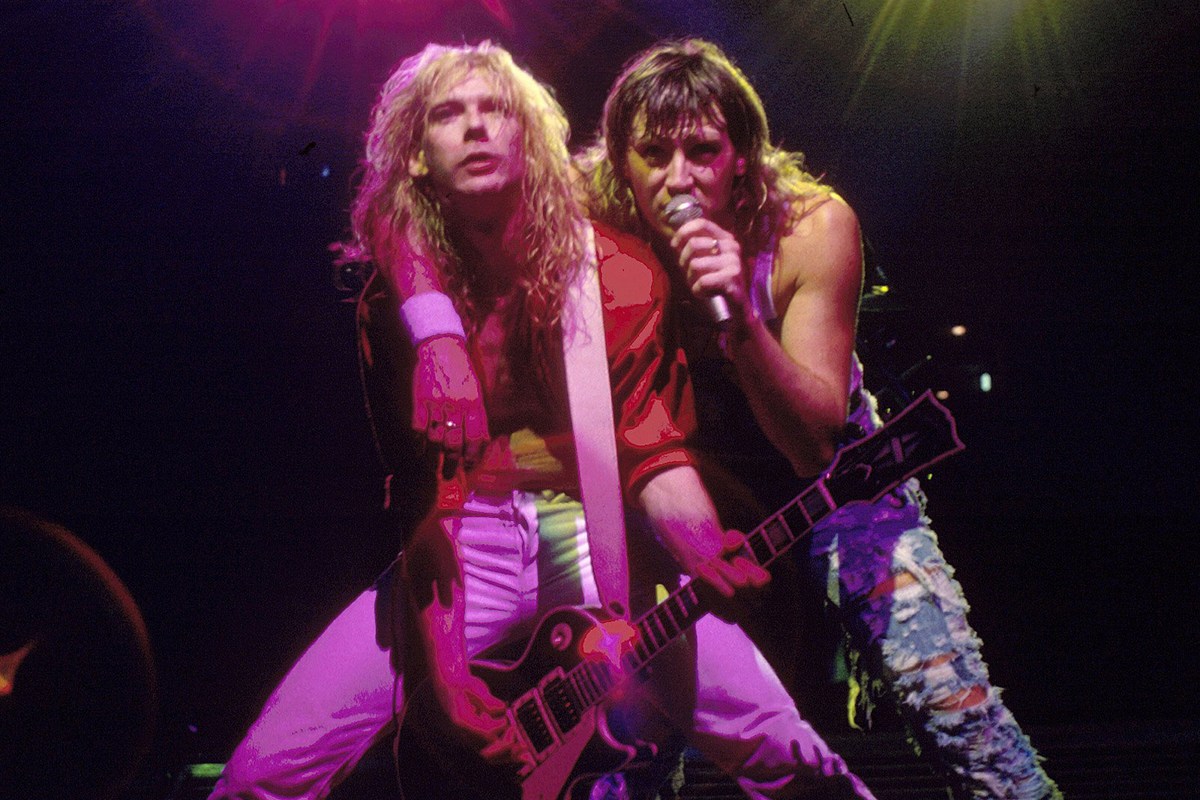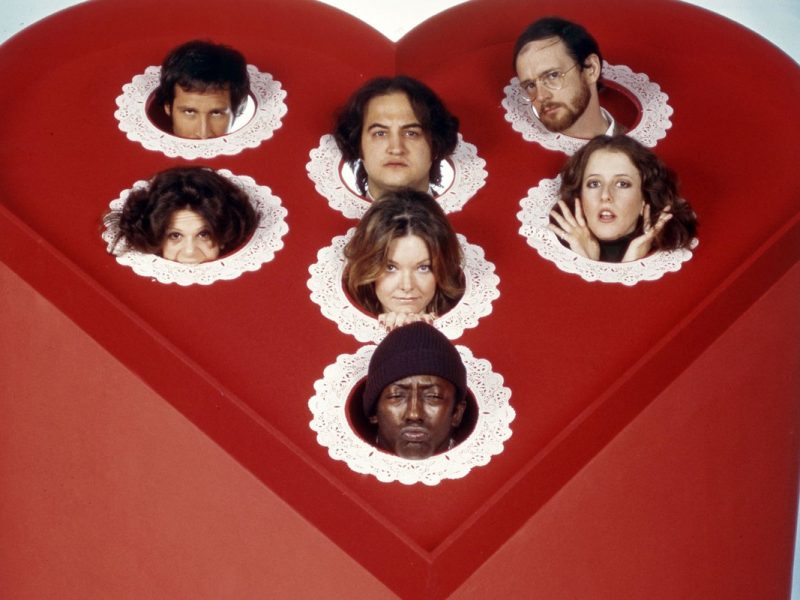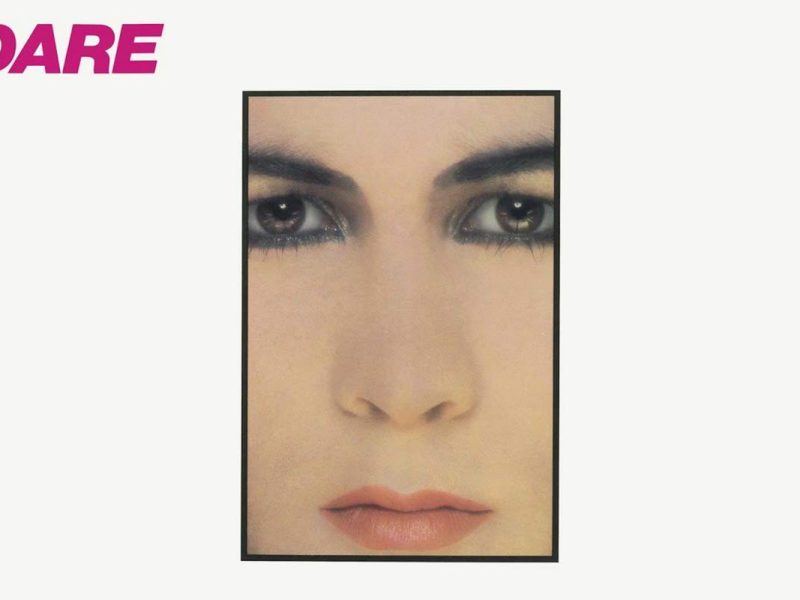Def Leppard’s tour cycle to promote their fourth album, Hysteria, started on Aug. 27, 1987, in Dublin. But an argument could be made that the Hysteria tour did not begin until Oct. 1, when the group unveiled its ” In the Round” stage at the Civic Center in Glens Falls, N.Y.
The setup – actually more of a rectangle than a circular stage like Yes used from 1978-80 – was the brainchild of Def Leppard’s manager Peter Mensch, who had seen Frank Sinatra do a 360-degree show. The appeal was two-fold: not a bad seat, or at least fewer, in the house; and the ability to sell more tickets than in a normal configuration with the stage on one end of the arena.
And not necessarily in that order. “It’s a totally different way to play the show,” singer Joe Elliott told this writer a few weeks into the tour. “It’s like you have four front rows to play to. You have people all around you, screaming from every direction. It’s pretty wild. … I think it’s great for the band and for the fans.”
The setup “made for a spectacular show once we got the feel for it – and it totally affected how we were as performers,” guitarist Phil Collen added in his 2015 memoir Adrenalized: Life, Def Leppard and Beyond. “Everyone does it nowadays, but back then it was a novel thing.”
The stage was designed by Def Leppard lighting director Phay MacMahon, incorporating a massive rig above the stage that included lasers, a rotating and rising drum riser for Rick Allen and a network of ramps and slopes for Elliot, Collen, guitarist Steve Clark and bassist Rick Savage to navigate. The Hysteria album art was painted on the floor of the stage, while the band emerged at the start of the show from behind a four-sided curtain, also featuring the album art, which disappeared cyclone-like as they kicked into “Stagefright.”
Watch Def Leppard Perform ‘Stagefright’
“It truly was state-of-the-art,” MacMahon said in Collen’s book. “It also had a very uncluttered look and feel to it, because all of the guitar techs worked underneath the stage, and all of the guitar amps were also located offstage.” The lighting rig, according to MacMahon, “featured many movable parts and lasers that had never been used for concerts before.”
The group came to Glens Falls for eight days of rehearsals, following 17 shows at smaller venues in the U.K. and Ireland, and three European festival dates back in June before Hysteria‘s release. But working into the new stage wasn’t just press-and-play: “It took a minute for us to get used to the set-up,” Elliott acknowledged back in 1987. “We’d never done anything like that before. Not many rock bands had. So the first few shows we were trying to fill the stage too much. We were just exhausted. We’re really learning how to pace ourselves and not feel like, ‘I have to be over there. … Wait, no, I have to be over there!'”
It was also the first chance for North American audiences to see the new model Allen in action after losing his left arm in a car crash on New Year’s Eve 1984. He had taught himself to play on a hybrid drum kit that allowed him to trigger sounds via electronics that would have been created with his left arm with his left foot instead. The kit had wowed European audiences and his bandmates, and would be a focal point for the Hysteria shows in the U.S.
The center-arena staging created one major logistical problem: how to get the band to the stage. The solution was oversized laundry-style carts that Def Leppard’s crew would use to move gear belonging to opening acts Tesla and Queensryche off stage. The band members would get into them backstage — Elliott and Clark in one, Collen and Savage in another — and be wheeled to the under-stage area past unsuspecting fans. Allen, who had to warm up before the show, would walk through the crowd in disguise, including a fake left arm holding a beer. In his memoir, Collen recalls that Robert Plant came to check out one of the Chicago concerts in 1988 and volunteered to wheel Collen and Savage’s cart that night. “We played extra hard that night, knowing that Robert Plant was watching us,” Collen wrote.
Watch Def Leppard Perform ‘Pour Some Sugar on Me’
The under-stage area, meanwhile, became something of a bacchanal as the tour went on. Part of Def Leppard’s schtick was a 20-minute section of “Rock of Ages” during which Allen would be playing while Elliott hyped the crowds through a call-and-response of the “What do you want? / I want rock ‘n’ roll” refrain. Collen, Clark and Savage would then retire to below deck, where a party was raging with women who were invited by crew members into the netherworld — if they were willing to disrobe.
“Under the stage, it would be like Sodom and Gomorrah,” photographer Ross Halfin said in VH1’s “Behind the Music” episode on Def Leppard. “There would be 60 naked girls, and I mean nothing on. They really were the party band. All the bands, Metallica, Motley Crue, think they’re so tough. You couldn’t touch Def Leppard for it. It’s just the fact they hid it really, really well.”
All of that was what lay ahead on that first night in Glens Falls. Hysteria endured sluggish performance out of the box so the concert was not sold out, like many of their first-leg shows. Some 5,786 fans turned up in the 7,500-capacity arena. The group nevertheless powered through 15 songs, including five from Hysteria and seven from its predecessor, 1983’s multi-platinum Pyromania — but nothing from the group’s 1980 debut, On Through the Night. The ratios would, of course, change as “Pour Some Sugar on Me” rocket-fueled Hysteria‘s performance and made Def Leppard shows a hot ticket during 1988 in Europe and North America.
The entire tour played more than 100 dates in North America alone, and the production was preserved on the home video Live: In the Round, In Your Face, filmed at a pair of February 1988 shows in Denver, released in March of 1989 and again in 2001 on DVD. The Hysteria tour wrapped up on Oct. 27, 1988, at the Tacoma Dome in Washington state. That would also be Clark’s final performance with the band; the guitarist died on Jan. 3, 1991, at the age of 30, while on a leave of absence from the band to deal with alcoholism. The cause of death was ruled respiratory failure caused by a mix of alcohol and prescription drugs.
The Hilariously Bad First Concerts of Rock’s Biggest Bands
There were long car rides, tiny stages and embarrassing situations on the way to stardom.
Why Don’t More People Love This Def Leppard Album?



